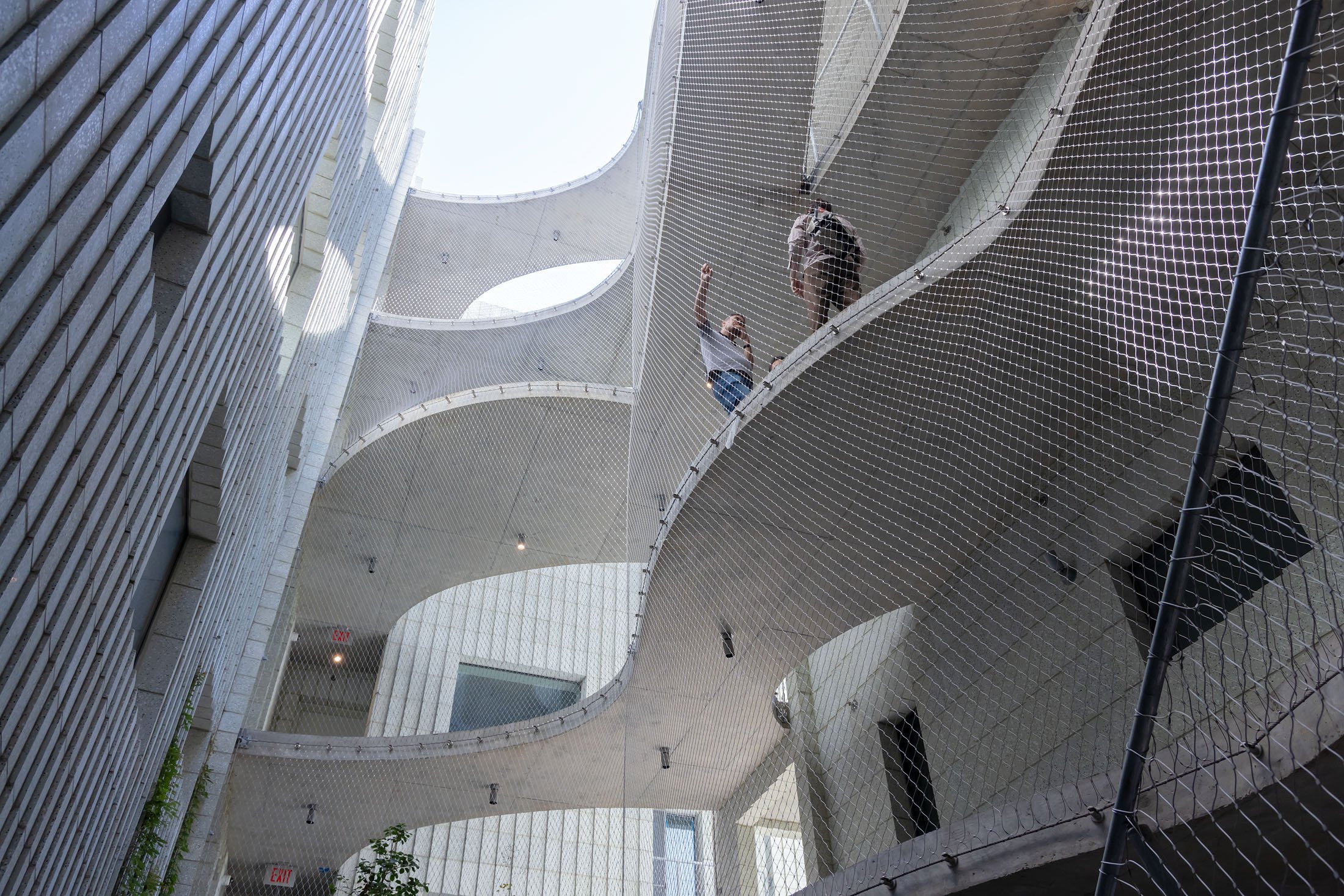
New Yorkers long ago surrendered to the mediocrity of the city’s housing stock. Even people with money will settle for a place whose best virtue is that there’s nothing wrong with it. In this town, a good apartment is merely okay. Okay means bad. Bad means intolerable. Many people can’t even afford bad.
The city’s many skilled architects tend to blame developers for a lack of imagination when it comes to market-rate housing. Developers blame risk-averse lenders, and high land and labor costs, as well as a local regulatory apparatus that stifles innovation.
But what if those obstacles are overblown? What if New York could have more urbane residential development—a distant second priority to more affordable housing, to be sure, but still high on my wish list for this hostile but weirdly intimate and occasionally magical city—simply by assigning top architectural talent to design more communally oriented condominiums? Would people forgo ultra-premium finishes and guaranteed parking spots in exchange for access to more daylight and fresh air, artful building details, and neighborly serendipity?
That’s the thesis on which Sam Alison-Mayne and Sebastian Mendez, co-founders of Brooklyn-based residential developer Tankhouse, brought 450 Warren Street, their market-rattling debut, to market in 2022. Each home in the 18-unit building, designed by the architecture firm SO — IL, is endowed with two private outdoor spaces and at least three daylight exposures. Defying the presumed necessity of double-loaded corridors—a space-efficient compromise that rules supreme in multifamily construction—the architects pulled the circulation outside the building envelope and into a courtyard.
Floor-through, cross-ventilated apartments wrap around the court to form a U-shaped complex. Open-air walks and stairs, plus lots of aviary-style cable netting, swoop across the void, uncorking into foyers with a bench at the entrance to each home. The gray-green concrete blocks are severe, yet flecked with white and black, and delicately angled to overlap at each joint, sending vertical shivers up and down the building. 450 Warren never smiles, but it makes you smile inside.
Getting anything built in New York is nearly impossible, as the wisdom goes, so getting something this inventive built here is truly impressive. But Alison-Mayne and Mendez never bought into the myth that financial and regulatory constraints necessitate moribund architecture.
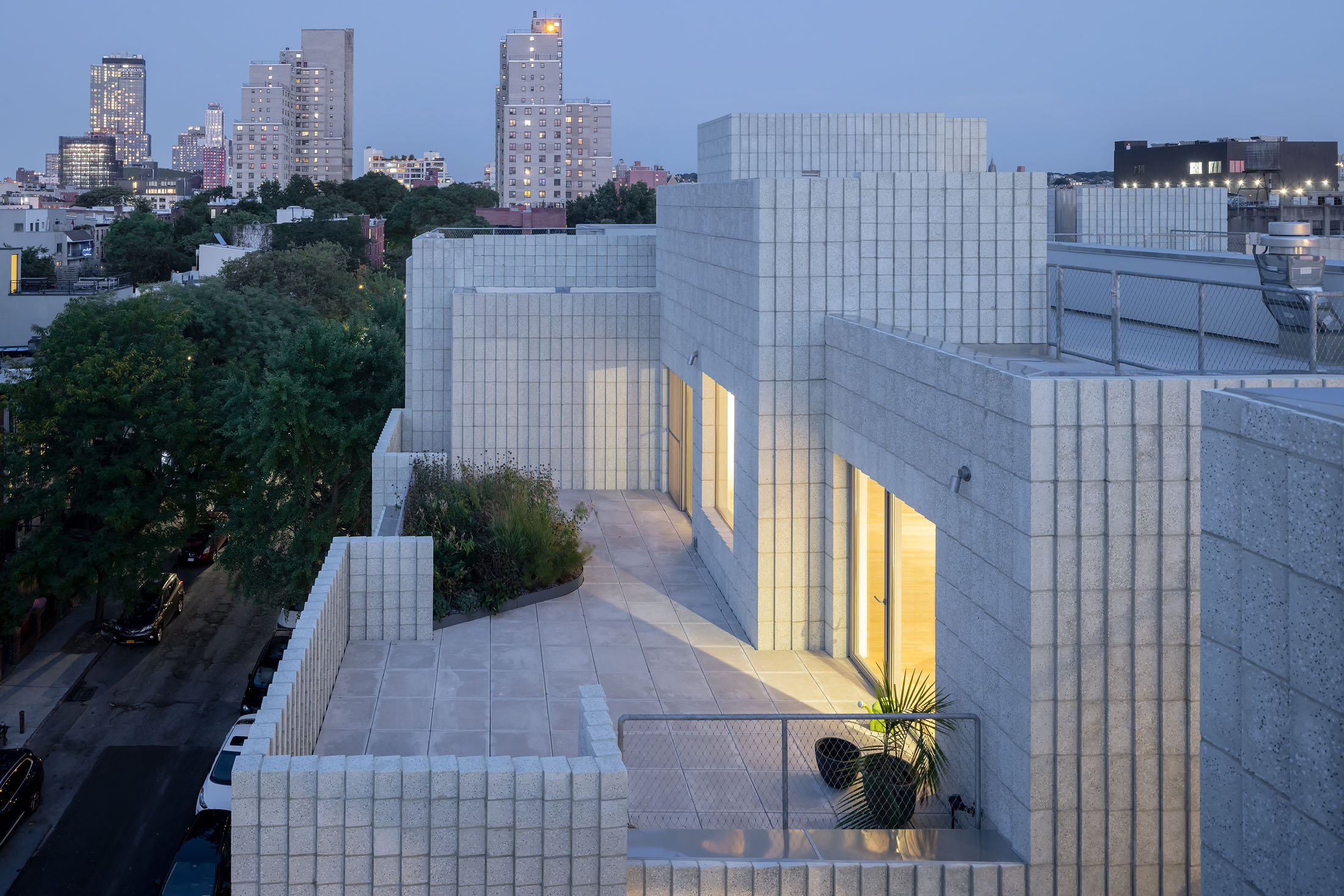
Prior to establishing Tankhouse in 2013, Alison-Mayne says, “We looked around New York and we thought the quality of housing, especially the newer stuff, was bad. And bizarrely, almost no one was trying to do anything differently.” Maybe there was a reason for that. Or maybe there was an opportunity—especially in Brooklyn.
Before they became partners, the two men bonded over an audaciously original building project: the Sperone Westwater gallery on the Bowery, designed by Foster + Partners and completed in 2010. Its multi-story entrance vestibule is in fact a mammoth freight elevator shaft that spans the full width of the building. Hulking above is the monumental elevator, fire-engine red, conceived as a moving room, and visible from the street through translucent glazing. Mendez, an architect who is originally from Argentina, worked on the job for Foster + Partners. Alison-Mayne worked as a manager for the construction company Sciame. And as the son of Pritzker laureate Thom Mayne—whose name came up only because I asked—he was raised to question the status quo in architecture.
In 2007, in the heart of the Bloomberg era, Alison-Mayne moved to New York from Los Angeles. He deemed some of the new cultural and commercial architecture good, but the residential architecture crap. The “luxury” buildings that cropped up in then gentrifying, now exclusive Brooklyn neighborhoods were drab if shiny vehicles for real estate speculation. They promised sunlight and views—translating to unprotected glass façades that rack up massive air-conditioning bills, leading their owners to keep the shades down—but provided little connection to the outdoors or the neighbors.
Alison-Mayne wondered why everyone said it would be impossible to compete with the established players who set the bar so low. He told me, “All we needed to do was commit to architecture in a real way, not as a branding exercise.” Asked to clarify, he pointed to architecture’s impact on daily life, “rethinking how people relate to the environment and each other.” He’s not opposed to working with famous architects (ahem), but he despises lackluster buildings phoned in by famous architects on behalf of cynical developers.
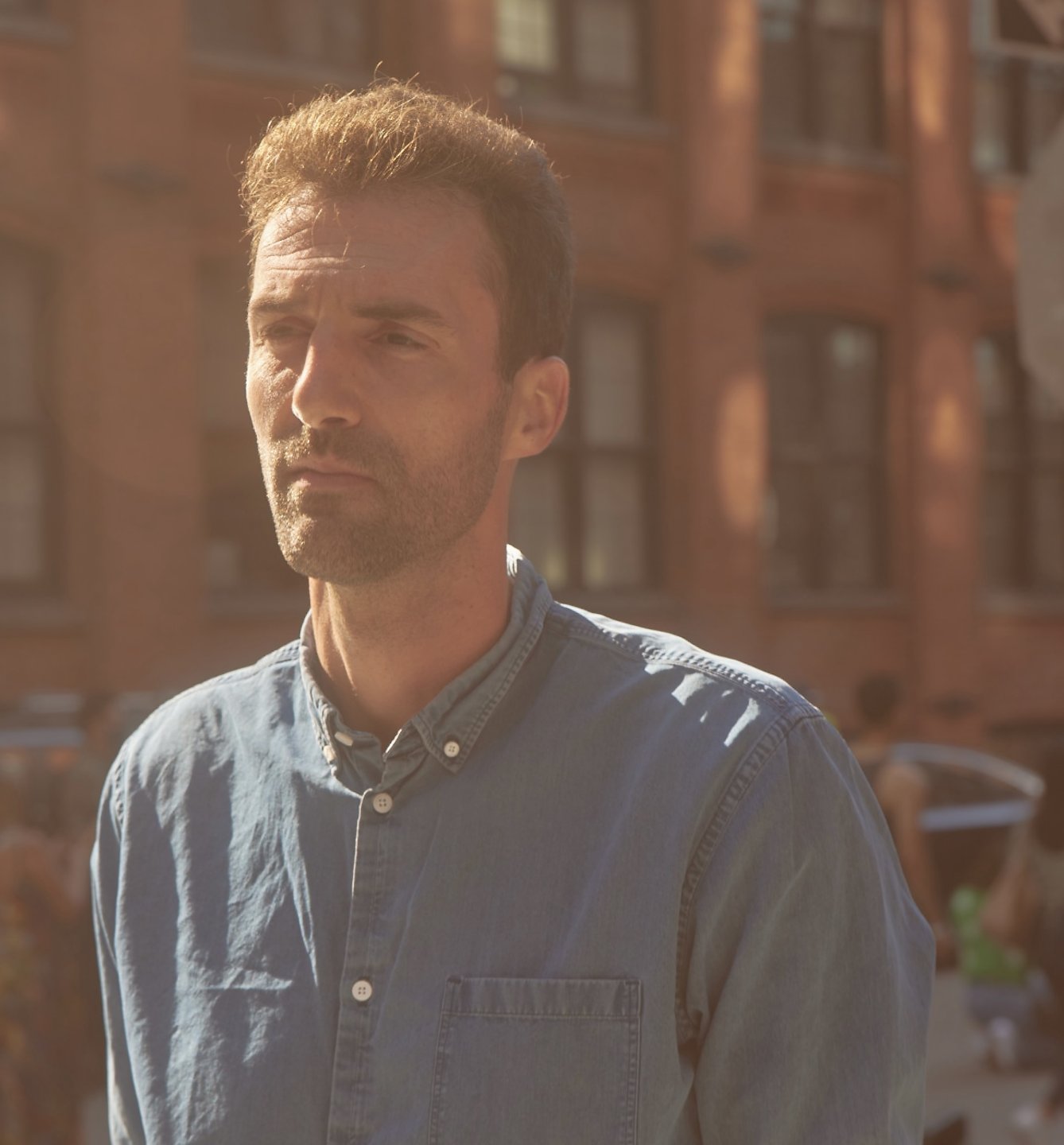
As I sit across from Alison-Mayne at his office in Dumbo, Brooklyn, eyeing a floor-to-ceiling tower of architecture books—No other developer in the city has a library like this, I think to myself—he doodles a quick alternative massing study for the site of 450 Warren. “The typical solution,” he says, would be an L-shaped building with double-loaded corridors and a shared roof deck, the whole thing visually “impenetrable” from the street. He cites market data showing that units with access to outdoor space, and units with more than one exposure, “always sold for more money, and faster,” than comparable ones. That’s how he sold investors on 450 Warren. I study a scale model of the building.
Then he points out a feature I didn’t realize had any significance: The common terrace, in this instance, is perched atop a retail space fronting Bond Street. “We put the garden on the second floor,” he says. “It’s more communal than on the roof.” It takes me a moment to realize he’s not just talking about giving residents a reason to hang out near the base of the building, but also forging an idealized relationship with the surrounding neighborhood. Though the garden is screened by cable netting and a street tree, it’s visible to passersby, and vice versa. Across the street stand the Gowanus Houses, a typical New York City Housing Authority development of brick buildings set in grass moats. Depending on your point of view, placing the residents-only garden up against the street is either radically democratic or radically obnoxious.
Yet the street-hugging terrace is one of several design features at 450 Warren that Tankhouse had to fight for, or at least to patiently plead for, during multiple rounds of permit application review with the city’s Department of Buildings and the Department of City Planning. That’s because the zoning code, Alison-Mayne says, requires a continuous street wall up to 33 feet, and the garden is only 11 feet above the sidewalk. Erecting a mesh screen up to 33 feet wouldn’t satisfy the regulations, but transparency was a must. Someone hit upon the idea of creating a double wall of cable netting, sandwiching a three-foot gap that could be considered usable storage space and therefore, by some arcane definition, a true street wall.
Doing things differently means taking on extra work and risk. The potential reward, according to Patrice Derrington, director of the Real Estate Development program at Columbia GSAPP, where Alison-Mayne picked up a master’s degree in 2013, is a better product that enhances “the quality of the urban fabric.” She lauds Tankhouse for prioritizing “the best communal experience for residents and the best connection into the social conditions of the neighborhood.” The firm’s “rigorous control” of construction costs, she adds, makes its developments financially viable. No matter how architecturally savvy Tankhouse may be, it can’t get around the pressures of capitalism. “We still have to go to the debt-and-equity markets,” Alison-Mayne says. “If our business model doesn’t work, we can’t continue.”
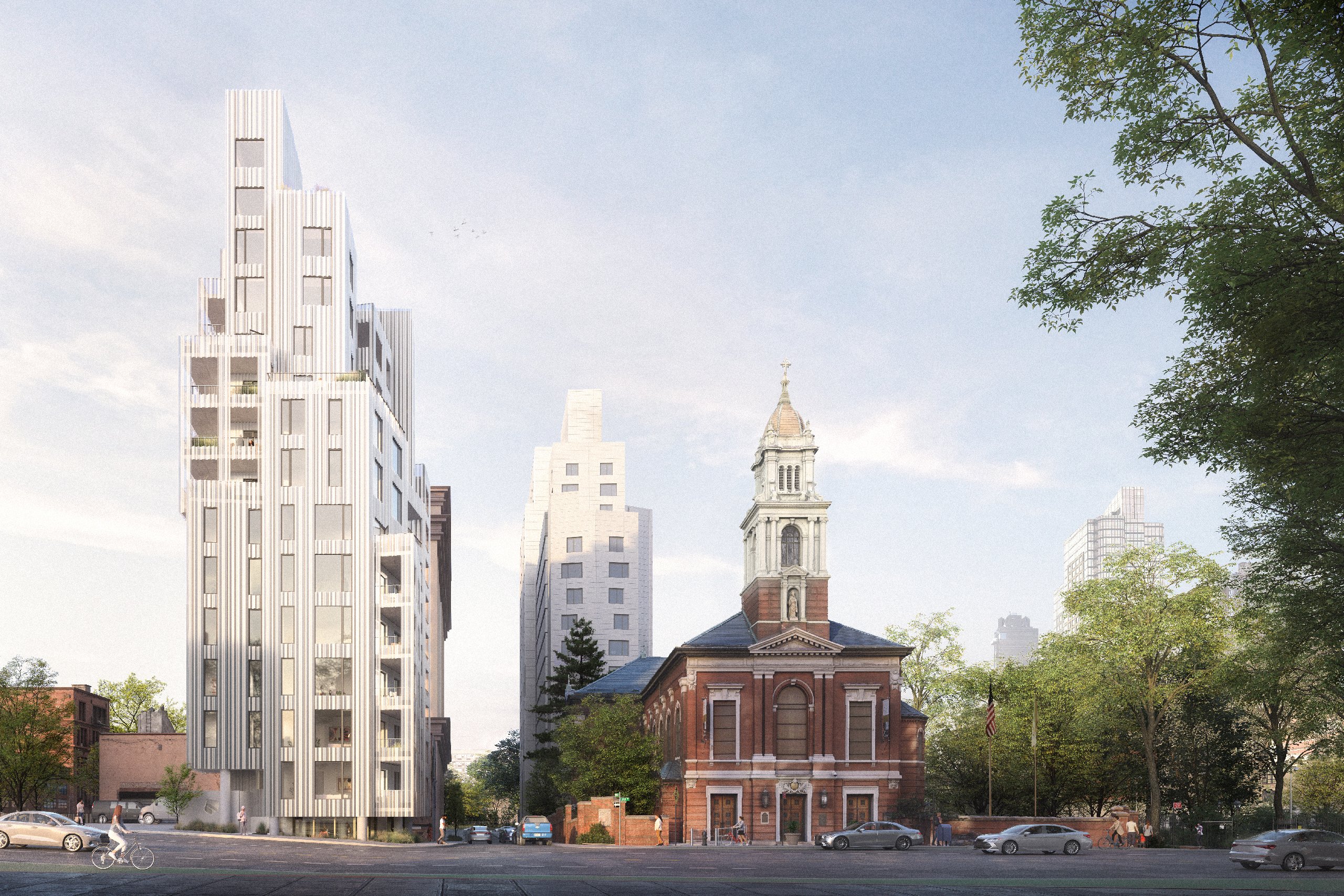
So far, Tankhouse shows no signs of being squeezed out of the market. The firm has at least three residential projects in its pipeline, all designed by SO — IL, with irregular massing that multiplies daylight exposures and outdoor spaces. At 9 Chapel Street, a building clad in wavy, perforated aluminum panels, and that is expected to be finished this summer, every condominium unit gets its own “front porch,” or generous terrace. Next will come 134 Vanderbilt Avenue, hardly the first upscale condo building near the Fort Greene Historic District, but, with its plentiful terraces and chiseled form stepping down to meet the roofline of adjacent row houses, superior to the lackluster yet pricey boxes built a decade ago. The biggest on the boards is 450 Union Street, a 220,000-square-foot development that “splits open” to visually connect the inner courtyard with the street, and that boasts a jigsaw façade that provides dual exposure for every room. “The larger the project, the more difficult it is to make it interesting,” Alison-Mayne says.
Tankhouse isn’t the only housing developer, and SO — IL isn’t the only architect, thinking outside the box in New York. A series of multifamily buildings designed by the architecture firm ODA, for example, push and pull within their zoning envelope, creating overhangs and nooks tricked out with private terraces and corner windows, plus shared outdoor spaces on the ground and roof levels. Tankhouse is taking on that kind of complexity, as well as the added risk of seeking permission for exotic features such as outdoor circulation and permeable street walls. It’s part of its Californian passion for inside-outside continuity. When Alison-Mayne talks about “porosity” between building and city, I don’t doubt his sincerity. I wonder how much longer the ideal of an open, democratic city can survive amidst the rising inequality that is degrading the public realm.
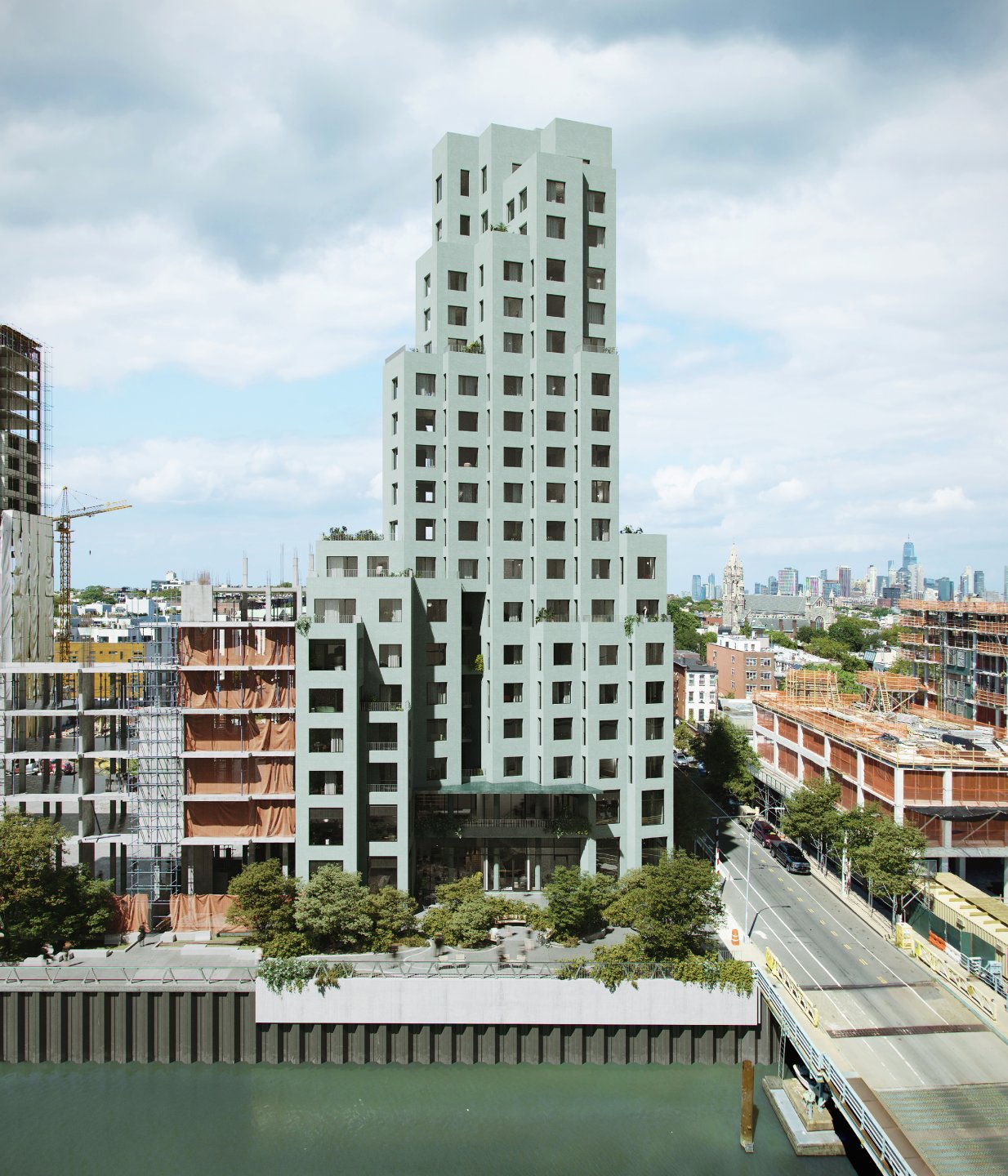
The biggest obstacle to more urbane residential development, after all, may not be overly prescriptive zoning codes and building regulations, nor the costs of labor and materials. What if it’s the widening gap between rich and poor that reduces nuanced development strategies and brilliant architectural moves to mere varieties of gentrification? What if it’s the market housing system that requires Tankhouse, on the one hand, to earn every dollar it can on investors’ capital in the process of creating something lovely, and that on the other hand has no answer for families who can’t afford next month’s rent in some decrepit building run by a landlord who could care less?
Some of the city’s most admirable residential architecture in recent years has been delivered by nonprofit, affordable, and supportive housing developers aided by government loan and grant programs. Designed by firms like Dattner Architects, Marvel, Magnusson, and Alexander Gorlin Architects, among others, these buildings are dignified dwellings with attractive common spaces. There aren’t anywhere near enough of them to stem the housing crisis.
Maybe there’s a world where residents of places like 450 Warren and the Gowanus Houses greet each other, unironically, on the street or through a cable-net scrim. I just don’t think that world is Brooklyn in 2024. To create a more open city where pockets of communal life spill out into the street, we’ll have to commit to more than design excellence. Decent housing has to be a right, not a luxury. Until then, the main thing a nice apartment complex can offer is, well, nice apartments.